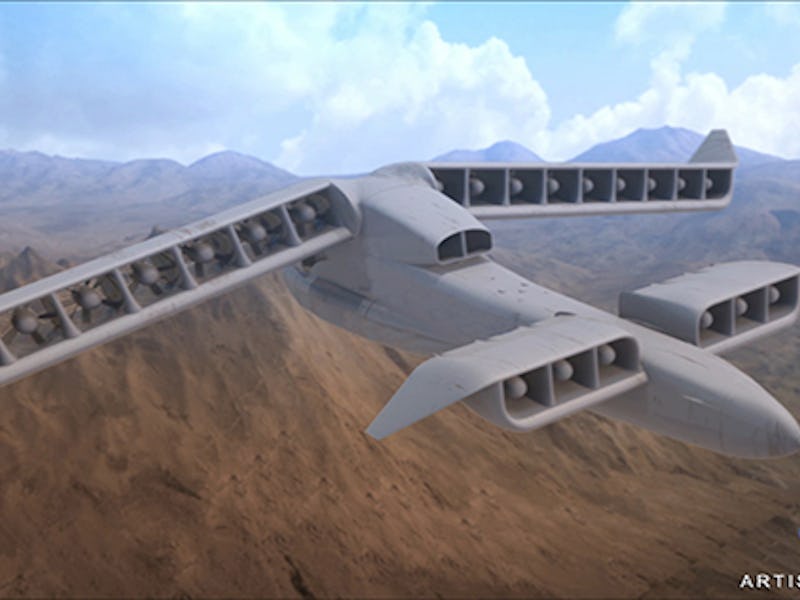
In the future, your Uber driver might be waiting outside in a flying car, thanks to the company’s interest in vertical takeoff and landing (VTOL) technology. These aircraft would in theory work similar to UberPool, with several people piling into one plane at a miniature city airport. Products head Jeff Holden believes this vision could become a reality in less than 10 years.
“We can someday offer our customers as many options as possible to move around,” said Holden, speaking to Recode’s Kara Swisher at the Nantucket Conference on Sunday. “Doing it in a three-dimensional way is an obvious thing to look at.”
VTOL is cool, but it’s not a new technology, having been in development since around the 1950s. In March, the U.S. Defense Advanced Research Projects Agency (DARPA) unveiled its VTOL X-Plane project, a concept plane that could rotate its propellers to point towards the ground.
In highly congested areas, VTOL will be crucial to allowing planes to take off without needing large runways. Holden described a future where pads on top of buildings create a network of Uber drop off points, so inner city flight travel is possible without sacrificing convenience or distance to the destination.
But even an era of Uber drivers flying passengers around may be short-lived. The company has made it clear it sees the future of its transport business as lying with self-driving cars. Earlier this month, the company rolled out a driverless car service in Pittsburgh, but its limited run was described as “the double black diamond of driving” by Raffi Krikorian, director of Uber Advanced Technologies Center. Considering Holden’s vision for a multitude of different options, it’s entirely possible that we see the development of a tiered system, where the driverless flying cars are reserved for the mega-rich elite. Still, we’ll get to fantasize about one day earning enough to fly to the club, which is nice.
Watch DARPA’s vision for how VTOL would work here: